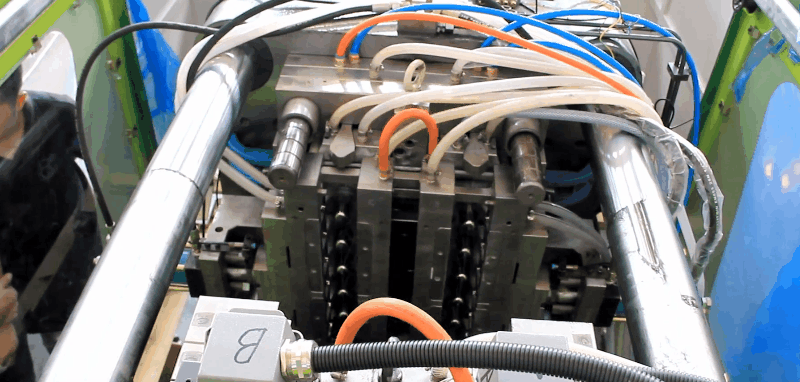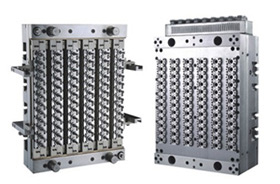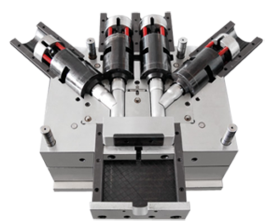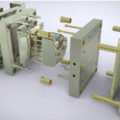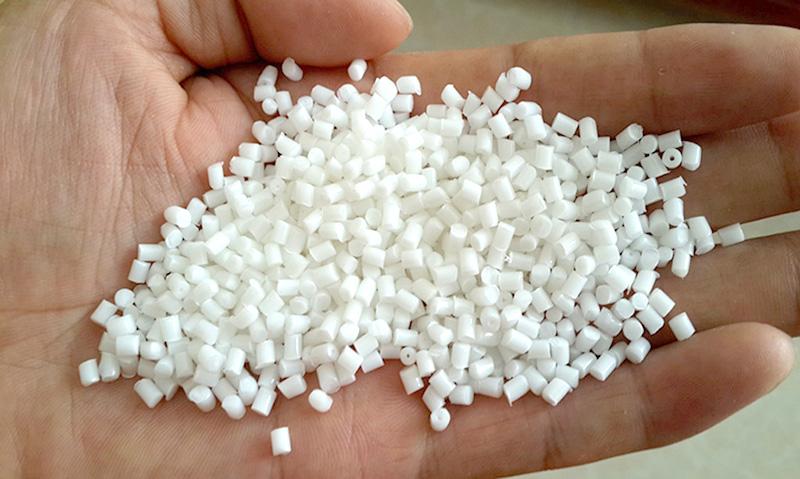
Poly (hexamethylene adipamide), Polyamide 66, or Nylon 66 (PA66) is an engineering-grade thermoplastic. PA66 has higher strength but lower impact resistance than PA6.
Applications for Plastic PA66
automotive industry
appliance housings
generally where impact resistance and strength are required
Competes with PA6 for most applications.
Plastic PA66 Injection Molding Processing Conditions
| Conditions Name | Value |
|---|---|
| Drying | Drying is not required if the material is sealed prior to molding; however, if the containers are left open, drying in a hot air oven at 85°C [185°F] is recommended. If the moisture content is > 0.2%, vacuum drying at 105°C [220°F] for 12 hours is recommended. |
| Melt Temperature | 260°C–290°C [500°F–554°F]
275°C–280°C [527°F–536°F] for glass filled grades. Melt temperatures above 300°C [572°F] should be avoided. |
| Mold Temperature | 80°C [176°F] suggested. Mold temperature affects crystallinity level which in turn affects physical properties. In the case of thin-walled parts, crystallinity changes with time when mold temperatures of less than 40°C [104°F] are used. In such cases, annealing may be needed to retain dimensional stability. |
| Material Injection Pressure | Generally between 75MPa–125 MPa, depending on material and product design. |
| Injection Speed | High (slightly lower for reinforced grades) |
Runners and Gates for PA66 injection molds
The gate location is important because of very fast freeze-off times. Any type of gate can be used; the aperture should not be less than half the thickness of the part. When hot runners are used, the size of the gates can be smaller than when cold runners are used, because premature freeze-off is prevented. When using circular tapered gates, the minimum diameter of the gate should be 0.75 mm.
Chemical and physical properties
PA66 homopolymer is produced by the polymerization of hexamethylene diamine and adipic acid (a dibasic acid). PA66 is a semicrystalline-crystalline material with one of the highest melting points among commercially available polyamides. The grades have strength and stiffness that is retained at elevated temperatures. PA66 does absorb moisture after molding, but retention is not as high as PA6. Moisture absorption depends on the composition of the material, wall thickness, and environmental conditions. Dimensional stability and properties are all affected by the amount of moisture absorption, which must be taken into account for product design.
Various modifiers are added to improve mechanical properties; glass is one of the most commonly used fillers. The addition of elastomers, such as EPDM or SBR, improves impact resistance.
Although it does not flow as easily as PA6, the viscosity of PA66 is low so it flows easily, which enables the molding of thin components. The viscosity is very sensitive to temperature.
Shrinkage is of the order of 0.01–0.02 mm/mm [1–2%]. The addition of reinforcing glass fibers reduces the shrinkage to 0.2–1%. Differential shrinkage in the flow and cross-flow directions is quite high. Mineral fillers yield more isotropic moldings.
PA66 is resistant to most solvents, but not to strong acids or oxidizing agents.


